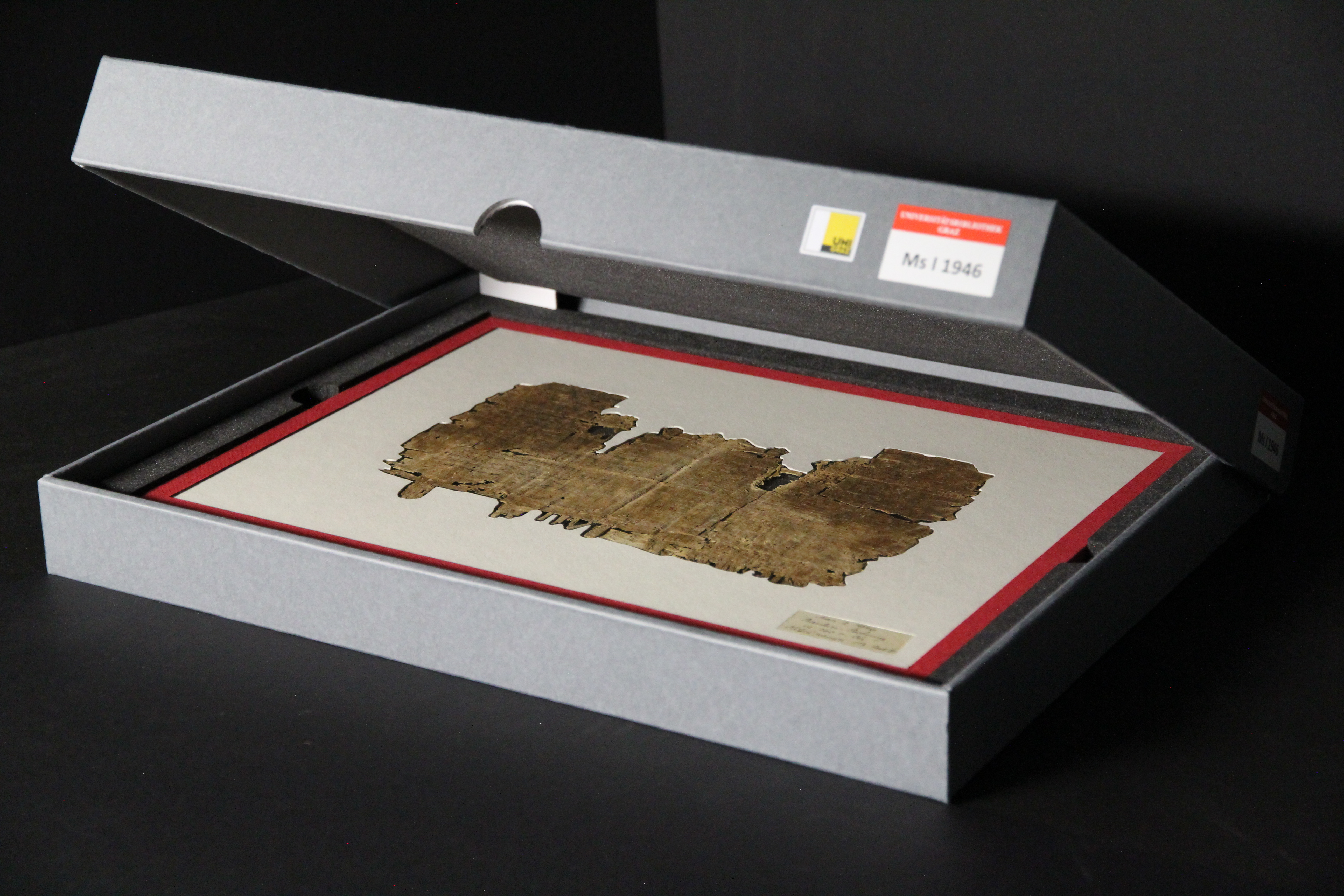The "Graz Mummy" book: Papyrus conservation encased in modern archival packaging
The "Graz Mummy" book is an extraordinary artefact. During routine work at the Graz University Library, conservator Dr Theresa Zammit Lupi made a surprising discovery: A papyrus fragment from the 3rd century BCE showing typical features for a codex including a thread fragment, sewing holes, a central fold and text layout – strong evidence that it was once part of a bound book.
The fragment was originally unearthed in 1902, having been part of mummy cartonnage. As it predates all previously known codices by around 400 years, it may redefine the established timeline of book history.
Challenge: Protection and presentation in one
We were commissioned by the Graz University Library to develop a new reinforced clamshell box, type KS 17, for the safe storage and conservation quality presentation of this fragile object. The aim was to ensure long-term preservation of the "Graz Mummy" book fragment while making it accessible for scholarly research and exhibitions.
Science meets conservation
The "Graz Mummy" book is more than a fascinating historical artefact – it highlights the vital link between research and modern conservation. With customized packaging solutions like this clamshell KS 17 box, we help to ensure that culturally significant originals are safely preserved and remain visible for future generations.
Image: The "Graz Mummy" book, Ms I 1946, 260 BCE, Graz University Library, Austria
Image credit: Conservation, Graz University Library, Austria

